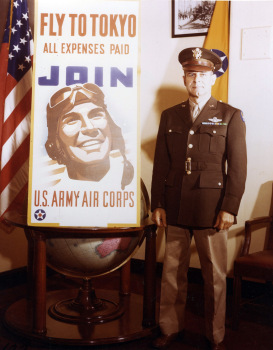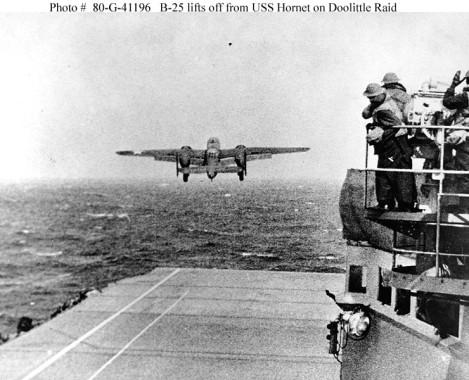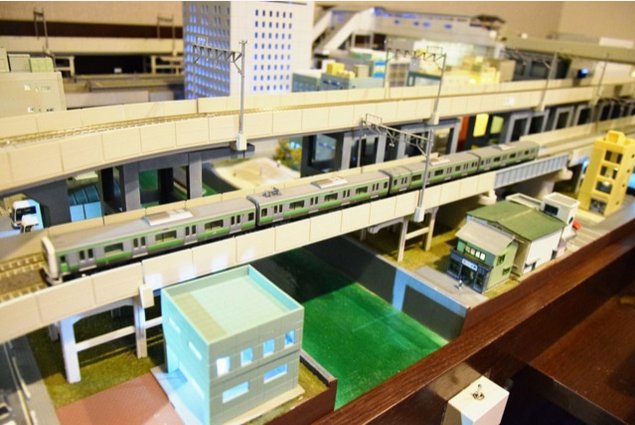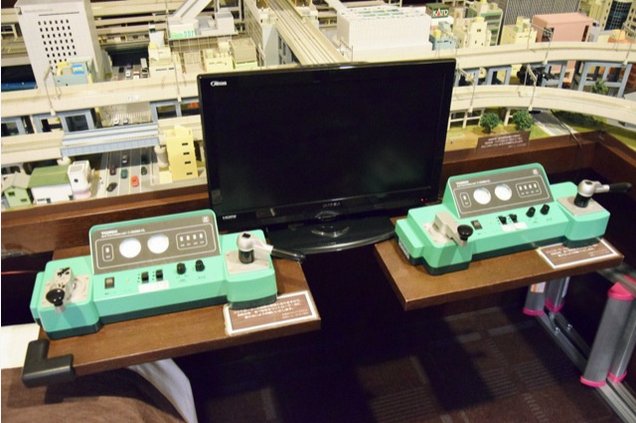PauliosVids
Published 24 Nov 2018Travelling with Britannia Airline from London via Bombay to Tokyo to discover Japan and back via Hong Kong.
July 22, 2023
Look at Life – Ticket to Tokyo (1959)
June 17, 2021
The Real Indiana Jones and his Jurassic Quests | BETWEEN 2 WARS I E.20 Summer 1923
TimeGhost History
Published 16 Jun 2021On their search for the origins of humanity, the expedition led by Roy Chapman Andrews makes some amazing discoveries in the Gobi Desert, including the uncovering of dinosaur eggs and velociraptors. Who knew paleontology could be so cool?
(more…)
April 18, 2021
America Strikes Back – Tokyo in Flames – WW2 -138 – April 18 1942
World War Two
Published 17 Apr 2021The Doolittle Raid is just a little bombing raid over Tokyo that doesn’t do that much physical damage. It does, however, have big repercussions — partly in terms of future offensive plans for the Japanese fleet, and partly in terms of the thousands of Chinese lives taken in reprisals for allowing the US bombers to land in China. There is small scattered action on the Eastern Front, more Japanese advances in Burma, and a French VIP escapes captivity in Germany and heads for Switzerland and freedom.
Join us on Patreon: https://www.patreon.com/TimeGhostHistory
Or join The TimeGhost Army directly at: https://timeghost.tvFollow WW2 day by day on Instagram @ww2_day_by_day – https://www.instagram.com/ww2_day_by_day
Between 2 Wars: https://www.youtube.com/playlist?list…
Source list: http://bit.ly/WW2sourcesWritten and Hosted by: Indy Neidell
Director: Astrid Deinhard
Producers: Astrid Deinhard and Spartacus Olsson
Executive Producers: Astrid Deinhard, Indy Neidell, Spartacus Olsson, Bodo Rittenauer
Creative Producer: Maria Kyhle
Post-Production Director: Wieke Kapteijns
Research by: Indy Neidell
Edited by: Iryna Dulka
Sound design: Marek Kamiński
Map animations: Eastory (https://www.youtube.com/c/eastory)Colorizations by:
– Mikołaj Uchman
– Norman Stewart – https://oldtimesincolor.blogspot.com/Sources:
– Stan S. Katz
– IWM: IND 3595
– Image of ‘The Fortress of Königstein from the North-West’ by Bernardo Bellotto, © National Gallery of Art, WashingtonSoundtracks from the Epidemic Sound:
– Rannar Sillard – “Easy Target”
– Howard Harper-Barnes – “London”
– Jo Wandrini – “Dragon King”
– Dream Cave – “The Beast”
– Reynard Seidel – “Rush of Blood”
– Wendel Scherer – “Out the Window”
– Brightarm Orchestra – “On the Edge of Change”
– Gunnar Johnsen – “Not Safe Yet”
– Johan Hynynen – “Dark Beginning”
– Philip Ayers – “Trapped in a Maze”Archive by Screenocean/Reuters https://www.screenocean.com.
A TimeGhost chronological documentary produced by OnLion Entertainment GmbH.
December 18, 2020
“Firestorm” – Strategic or Terror Bombing? – Sabaton History 098 [Official]
Sabaton History
Published 17 Dec 2020At the end of July 1943, Hamburg burned. A fleet of British heavy bombers had dropped thousands of incendiaries over the city, turning it into a hearth of unprecedented dimensions. Numerous major fires merged together into a single storm of fire. Structures combusted under the immense heat, as strong winds drove the inferno through the streets at rapid speed. Craving for more oxygen, the firestorm sucked human bodies into the flames and immediately incinerated or mummified them. Thousands of others died slowly of carbon monoxide poisoning in their shelters. By the end of the raid, 60% of Hamburg had been burned out and more than 35,000 of its inhabitants were dead. But while the Germans were shocked to disbelief, for the British the firestorm has worked as intended. And this was just the beginning.
Support Sabaton History on Patreon:
https://www.patreon.com/sabatonhistoryListen to “Firestorm” on the album The Art of War: https://music.sabaton.net/TheArtOfWar
Listen to Sabaton on Spotify: http://smarturl.it/SabatonSpotify
Official Sabaton Merchandise Shop: http://bit.ly/SabatonOfficialShopHosted by: Indy Neidell
Written by: Markus Linke and Indy Neidell
Directed by: Astrid Deinhard and Wieke Kapteijns
Produced by: Pär Sundström, Astrid Deinhard and Spartacus Olsson
Creative Producer: Maria Kyhle
Executive Producers: Pär Sundström, Joakim Brodén, Tomas Sunmo, Indy Neidell, Astrid Deinhard, and Spartacus Olsson
Community Manager: Maria Kyhle
Post-Production Director: Wieke Kapteijns
Editor: Karolina Dołęga
Sound Editor: Marek Kamiński
Maps by: Eastory – https://www.youtube.com/c/eastory
Archive: Reuters/Screenocean – https://www.screenocean.comColorized by:
Norman Stewart – https://oldtimesincolor.blogspot.com/Sources:
Imperial War Museums: C3677,HU 63075, HU 63089, MH 27517, CL3400, MH 24747,CL3395, MH 24764, CH 6386, CH 6386, CH 6275, CH 15879, C 3371, CH 18371, C 3918, C2367, HU44269, C 4748, PST 14359, C 4973,
Bundesarchiv
National Archives NARA
Icons from the Noun Project: Arrow by 4B Icons, Bomb by P Thanga Vignesh, fire building by dDara, Skull by Muhamad UlumAll music by: Sabaton
An OnLion Entertainment GmbH and Raging Beaver Publishing AB co-Production.
© Raging Beaver Publishing AB, 2019 – all rights reserved.
January 14, 2019
Sun Yat-sen – An Army in Exile – Extra History – #3
Extra Credits
Published on 12 Jan 2019Sun Yat-sen spends the next ten years following his London adventures trying to organize the rebellion in Tokyo — and ends up not recruiting just Chinese reformers, but radical fighters from Japan and the Philippines too.
Join us on Patreon! http://bit.ly/EHPatreon
April 19, 2014
The Doolittle Raid, 18 April 1942
I was busy with away-from-the-computer stuff yesterday, so I didn’t see this post until today:
Less than 19 weeks after the U.S. Navy was attacked at Pearl Harbor on Dec. 7, 1941, the American military struck back. On April 18, 1942 – 72 years ago today – sixteen Army Air Force bombers launched from a Navy aircraft carrier to attack the enemy’s homeland.Brig. Gen. James Doolittle poses beside an Air Corps recruiting poster that alludes to his bombing raid on Japan in April 1942. (c) 1943
Led by Lt. Col. James H. Doolittle, the raid was launched from USS Hornet, commanded by Capt. Marc Mitscher and escorted by ships under the command of Vice Adm. “Bull” Halsey aboard his flagship, USS Enterprise.
The extraordinary joint Doolittle Raid showed Imperial Japan’s military leaders their vulnerability and America’s resolve.
The raid also demonstrated innovation, courage and resilience.
The five-man B-25 crews trained relentlessly prior to their mission, with specialized training led by Navy flight instructor Lt. Henry F. Miller. The Army Air Force made ingenious modifications so the bombers could have extra fuel but less weight.
Pilots, all volunteers, needed to be extremely fearless, taking off in their huge planes from a short flight deck. On rough seas they launched in bitter cold, 75-knot winds and foam-flecked spray, as Sailors aboard recalled.
Doolittle, as his team’s leader, took off first. His success inspired the other pilots just as their entire mission would inspire the nation – putting action to the nationwide words of resolve heard throughout the world: “Remember Pearl Harbor!”
[…]
An Army Air Force B-25B bomber takes off from USS Hornet (CV 8) at the start of the raid, April 18, 1942. Note men watching from the signal lamp platform at right. (Official U.S. Navy Photograph, now in the collections of the U.S. National Archives – Courtesy of the NHHC Photo archives)
Seven Doolittle Raiders were killed in the mission: Two drowned and a third was killed by the fall after bailing out; eight were captured by the Japanese. Three of the eight POWs were executed Oct. 15, 1942, and another died of malnutrition Dec. 1, 1943. The surviving four POWs were released in August 1945.
The Raiders who landed in China were assisted by American missionary Rev. John M. Birch, whose contacts within Japanese-occupied China helped the Raiders to escape. Afterward, Birch was commissioned a lieutenant in the Army Air Force, continuing his work as a missionary while gathering intelligence on the Japanese. He was killed Aug. 25, 1945, at the age of 27, during a confrontation with Chinese Communists. The John Birch Society honors Birch, a recipient of both the Legion of Merit and the Distinguished Service Medal.
Even though the Doolittle Raiders bombed Tokyo, it was the Chinese who suffered the most from the raid. Furious the Chinese nationalists were protecting the Americans, the Japanese retaliated against several coastal cities suspected of harboring the Americans, killing an estimated 250,000 Chinese citizens.
Doolittle was so convinced his mission had been a failure, he was convinced he would face a court-martial upon his return to the United States. Instead, he was promoted to general, skipping the rank of colonel. He and all of his Raiders were awarded the Distinguished Flying Cross.
Mitscher served in a variety of command leadership positions for the rest of World War II, earning the rank of admiral and title as Commander in Chief, U.S. Atlantic Fleet.
February 16, 2014
Hotel room with a built-in model train layout
Another case of Japan finding a niche clientele, this time in specialized hotel accommodation:
A Hotel Room Where Train Nerds Can Get Action. Train Action.
In most Japanese hotel rooms, you just sleep. In some, you might do other things. But in this Tokyo hotel you can play with toy trains.
At the Washington Hotel in Tokyo’s geek district of Akihabara, room 1304 is quite different from the rest. It’s outfitted with a diorama that has Tokyo Tower, Tokyo Skytree, and thirty meters of model train track!
H/T to Jeff Shultz for the link.
June 1, 2011
New report from the Obviousness Bureau: TEPCO underestimated earthquake/tsunami risks
Hands up, anyone who didn’t see this coming? Okay, put your hands down board members of TEPCO:
Japan underestimated the risk of a tsunami hitting a nuclear power plant, the UN nuclear energy agency has said.
However, the response to the nuclear crisis that followed the 11 March quake and tsunami was “exemplary”, it said.
The Fukushima Daiichi nuclear plant, which was badly damaged by the tsunami, is still leaking radiation.
Japan’s Prime Minister Naoto Kan is facing a no-confidence vote submitted by three opposition parties over his handling of the crisis.
They say he lacks the ability to lead rebuilding efforts and to end the crisis at the Fukushima plant, public broadcaster NHK reported.
Some politicians from Mr Kan’s governing Democratic Party of Japan (DPJ), including former Prime Minister Yukio Hatoyama, are backing the motion.
If it is passed in a vote expected on Thursday, Mr Kan would be forced to resign or call a snap election.
However, given the thousands of dead and missing from the earthquake and tsunami, the attention paid to Fukushima has been rather disproportional. As someone joked yesterday, radiation from Fukushima has killed fewer people (none) than e.coli tainted food in Germany (16 at last report).
Update: In case I’m being too obscure, the “this” I refer to in the initial paragraph is the with-the-benefit-of-hindsight conclusion that the Fukushima plant was inadequately prepared for the earthquake and subsequent tsunami.
May 21, 2011
President of TEPCO falls on his sword a few months late
The president of the Tokyo Electric Power Co. (TEPCO) has resigned:
In a business practice that recalled the ritual seppuku suicides of samurai warriors, the president of Japan’s largest power company resigned Friday to assume responsibility for the world’s worst nuclear disaster since Chernobyl.
At a nationally televised news conference, Masataka Shimizu bowed deeply in an exhibition of remorse and declared, “I am resigning for having shattered public trust about nuclear power and for having caused so many problems and fears for the people.
“I want to take managerial responsibility and bring a symbolic close.”
Whether it’s a hearkening-back to Samurai ethos or not, he should have resigned long ago, as soon as it became clear that the company he headed was doing everything it could to conceal the extent of the actual damage both from the media and from the government.
There is a widespread feeling the government and TEPCO officials did not disclose all they knew during the early days of the crisis and have been less than forthcoming since.
In the first weeks after the earthquake, TEPCO officials received 40,000 complaints a day about the lack of information. Police had to be assigned to guard the company’s offices from anti-nuclear protesters.
This week, TEPCO released documents showing it was dealing with three simultaneous nuclear meltdowns, while reassuring people the fuel rods were safely intact in all the reactors.
“Why did it take two months to get to this point?” demanded a Wednesday editorial in the Nikkei business newspaper.
“Even a rough calculation of conditions inside the reactors would have helped in choosing the best response.”
Public confidence was shaken further when it emerged engineers at Fukushima were so unprepared for the disaster, they had to scavenge flashlights from nearby homes and used car batteries to try to reactivate damaged reactor gauges.
Nobody with an ounce of sense is criticizing the workers at the plant for their reaction to an earthquake that was far in excess of the design for the reactors, or a tsunami that was much higher than anything the designers had foreseen. Shit happens, and it was the daily double of fantastically unlikely natural disasters that struck the plant.
The company, however, deserves more than just a light dusting of shame for the way they appear to have been actively preventing the real state of the plant becoming known to the international nuclear community and the national government. A nuclear disaster is everyone’s business, and there were resources available to TEPCO that they signally failed to draw upon. Saving face is not an acceptable reaction to this kind of catastrophe.
May 20, 2011
Only one high speed rail line in the world is profitable
Babbage looks at the economics of the various high speed railway lines both in service and planned:
Of all the high-speed train services around the world, only one really makes economic sense — the 550km (350-mile) Shinkansen route that connects the 30m people in greater Tokyo to the 20m residents of the Kansai cluster of cities comprising Osaka, Kobe, Kyoto and Nara. At peak times, up to 16 bullet trains an hour travel each way along the densely populated coastal plain that is home to over half of Japan’s 128m people.
Having worked for many years in Tokyo, with family in Osaka, your correspondent has made the two-and-a-half hour journey on the Tokaido bullet-train many times. It is clean, fast and highly civilised, though far from cheap. It beats flying, which is unbearably cramped by comparison, just as pricey, and dumps you an hour from downtown at either end.
The sole reason why Shinkansen plying the Tokaido route make money is the sheer density — and affluence — of the customers they serve. All the other Shinkansen routes in Japan lose cart-loads of cash, as high-speed trains do elsewhere in the world. Only indirect subsidies, creative accounting, political patronage and national chest-thumping keep them rolling.
California’s planned 800-mile high speed rail route cannot possibly earn a profit, for many reasons (not least of which is that the first segment of the network won’t even run high speed trains until the entire system is built). It’s going to cost an eye-watering amount of money even to build that first section:
Between them, the federal government, municipals along the proposed route and an assortment of private investors are being asked to chip in $30 billion. A further $10 billion is to be raised by a bond issue that Californian voters approved in 2008. Anything left unfunded will have to be met by taxpayers. They could be dunned for a lot. A study carried out in 2008 by the Reason Foundation and the Howard Jarvis Taxpayers Association put the final cost of the complete 800-mile network at $81 billion.That is probably not far off the mark. Last week, the state’s Legislative Analyst’s Office came out with a damning indictment of the project’s unrealistic cost estimates and poor management. The bill this legislative watchdog put on the first phase of the high-speed rail project alone is $67 billion — and higher still if the project runs into trouble gaining route approval in urban areas.
If the latter number is correct, then the first phase of the system is clocking in at nearly $1 billion per mile. And this is the “cheap” section running through mostly thinly populated farming areas. If, somehow, the more expensive sections of the planned network don’t cost much more, the total construction bill will top $800 billion. The original plan had the entire system costing $43 billion.
Cost overruns are an expected part of major government construction projects, but that’s insane.
April 2, 2011
Cultural bias and bad reporting
Jon sent me this link, which discusses the media coverage of the Fukushima workers:
We hear of Fukushima workers “fleeing” the plant, when what happened is they left for a few hours.
We hear about the appearance of tiny amounts of radioactive iodine in Tokyo tap water — but nothing the next day, when it returns to safe levels.
We hear a thousand commentators mention one measurement that was ten million times normal — but nothing when that turns out to have been a measurement error, made by someone who had little sleep and the weight of the world on his shoulders.
We hear people spinning tales of “worst case scenarios” ten thousand times worse than anything that could plausibly happen — and almost nothing about the fact that the Fukushima reactors endured an earthquake 32 times as forceful as they had been designed for, followed by a tsunami twice as high, and still largely survived.
We hear about “plutonium in the soil” — but not that it’s an amount so tiny that pound for pound, bananas in the grocery store are five thousand times more radioactive.
The London Daily Mail reports that the workers “expect to die,” but not that the worst radiation exposure among all the workers amounts to about as much as 15 CT scans, a dose that not only isn’t fatal, but that has no observable health effects.
A lot of bad reporting seems to come from mere scientific illiteracy.
Not only scientific illiteracy, but willful illiteracy. Combine the need to file a story — the more sensational, the better — with the anti-scientific bias that’s been “baked in” to journalism students for two generations, and this is what you get.
Some of it may be simply that fear sells papers, and a headline that says “Catastrophe imminent” sells more papers than “Catastrophe averted.”
But a lot of it appears to be purposeful — it’s no coincidence that the people spinning the wildest tales of catastrophe have also turned out to be associated with vehemently anti-nuclear think tanks and political pressure groups.
Whether it’s because of ignorance or on purpose, the effect of this misreporting it to keep people afraid.
March 31, 2011
Real world influence of bad science reporting
If I seem to be linking to wormme’s blog a lot lately, it’s because he is a great source of practical information . . . and he hates sensationalist media reports even more than I do. Normally, the effect of junk science sensationalism is pretty small: people worry a bit more about stupid things, but generally get on with their lives.
Sensational — and badly mistaken — reporting on radiation is a big exception to that:
Hundreds of people evacuated from towns and villages close to the stricken Fukushima nuclear plant are being turned away by medical institutions and emergency shelters as fears of radioactive contagion catch on.
Medical personnel turning them away.
Hospitals and temporary refuges are demanding that evacuees provide them with certificates confirming that they have not been exposed to radiation before they are admitted.
Do you readers see the error here? If not, this blog is failing you.
When trained, professional medical staff are confusing radiation with contamination, things are really, really bad.
The article goes on to quote some medical experts — i.e., non-insane people.
“If someone has been contaminated externally, such as on their shoes or clothes, then precautions can be taken, such as by removing those garments to stop the contamination from getting into a hospital,”
But what if it’s on the person?!
In my trade, we have a secret special decontamination technique. I’m violating all kinds of unwritten laws by sharing it, but this is an emergency, right? When a person needs general decontamination we always do this first, and it almost always works. Are you ready?
Soap and warm water.
I’ll probably be drummed out of the National Registry of Radiological Protection Technicians for revealing that.
March 28, 2011
TEPCO still seems to be more a hindrance than a help over Fukushima
A report from Kyodo News shows that Tokyo Electric Power Co. (TEPCO) is still not fully co-operating or providing all the information needed to clean up the Fukushima reactor sites:
While efforts at containing troubled reactors have not been making rapid progress at its Fukushima Daiichi nuclear power plant, signs were emerging that Tokyo Electric Power Co., in the absence of a top officer, is losing its grip on accurately informing the public about risks from radiation.
On Sunday, the utility, known as TEPCO, announced in the morning that the concentration of radioactive materials of water found inside a turbine building adjacent to a rector housing was ”around 10 million times (that of) water in a normal reactor core” but later corrected the information, saying it ”made a wrong estimation.”
[. . .]
On March 20, TEPCO said, ”There were no increases in radiation levels in adjacent areas.” But increases were logged in various parts of adjacent areas, prompting skeptical reporters to raise a series of questions at a news conference but TEPCO officials remained mum.
TEPCO has been giving a series of news conferences since Fukushima Daiichi got into trouble after the March 11 quake. Attending officials have not been able to provide satisfactory answers to a majority of questions raised, only repeating words of apology and, ”We will check it.” It has left the impression they are unable to reply to questions because they are not given enough information.
[. . .]
But on Saturday, it was disclosed that the company had not informed workers who suffered high levels of radiation at the No. 3 reactor unit about radiation levels of the place where they would be working. The government was also found to have not been informed.
Top government spokesman Yukio Edano expressed his displeasure, telling a news conference, ”We cannot give appropriate instructions unless accurate information is provided swiftly.”
TEPCO is allowed to monopolize the power utility market in Tokyo and surrounding regions by law. As the nation’s biggest utility, it has also been the key promoter of the nuclear power policy and one of the main employers of retiring bureaucrats.
Critics say the company lacks cost consciousness and apparently has no idea about what competition is. It is more like a bureaucracy rather than a business being run, they said.
March 27, 2011
Panic-mongers still hard at work over Fukushima
Lewis Page is less than impressed with the media’s ongoing coverage of the Fukushima reactor clean-up:
The situation at the quake- and tsunami-stricken Fukushima Daiichi nuclear powerplant in Japan was brought under control days ago. It remains the case as this is written that there have been no measurable radiological health consequences among workers at the plant or anybody else, and all indications are that this will remain the case. And yet media outlets around the world continue with desperate, increasingly hysterical and unscrupulous attempts to frame the situation as a crisis.
[. . .]
Nonetheless, in the hyper-cautious nuclear industry, any dose over 100 millisievert is likely to cause bosses to pull people out at least temporarily. Furthermore, the three workers had sustained slight burns to their legs as a result of standing in the radioactive water – much as one will burn one’s skin by exposing it to the rays of the sun (a tremendously powerful nuclear furnace). They didn’t even notice these burns until after completing their work. Just to be sure, however, the three were sent for medical checks.
So — basically nothing happened. Three people sustained injuries equivalent to a mild case of sunburn. But this was reported around the globe as front-page news under headlines such as “Japanese Workers Hospitalized for Excessive Radiation Exposure”. Just to reiterate: it was not excessive.
Reporters clamoured to know more — in particular how could the water in the basement of the reactor building have become so radioactive — no less than “10,000 times normal”. One might note that in general radiation levels 10,000 times normal mean that you could achieve a tiny fraction of an extra percentage point of cancer risk by being exposed for a fortnight or so.
[. . .]
Then there’s the matter of the tapwater in Tokyo. Two days ago, levels of radioactive iodine-131 were found in the city’s water which were above the safety limit for baby milk calculated on the basis of a year’s consumption: in other words, if babies drank such water for a year constantly they would have a tiny, minuscule extra risk of thyroid cancer.
[. . .]
There was never any chance whatsoever that levels of iodine-131 in the tapwater would remain noticeable for a year, which is what would be necessary for any effects at all on the city’s babies. It was really quite irresponsible of the authorities to recommend that infants shouldn’t drink it. (One can’t help noticing that the first such recommendation reportedly came from the city authorities, belatedly followed by the national government. The Tokyo city governor is from the national opposition party and is facing a tough re-election battle. He had previously sought to use the Fukushima situation to cast his political rivals in a bad light over the deployment of Tokyo’s elite Hyper Rescue firefighters.)
I’d also recommend that you keep an eye on the World’s Only Rational Man for his professional take on what the media is currently panicking over at any given moment:
If modern “journalism” wasn’t the single most incompetent industry in human history we wouldn’t be pulling our hair out over this. Where’s the followup to the reports of Cl-38?
How freakin’ incompetent is the entirety of Big Media?!
You’ve had two weeks to learn a minimum about this subject you obsessively “cover”.
“But…but math is hard!” you whine? Then find some dad-gum folks who do this crap for a living rather than cultivate ivory tower media-hounds.
Sorry. Forgive the venting. Tired and P.O.ed.
Apparently going beddy-bye to the thought of runaway nuclear excursions isn’t warm milk and happy stories. Monsters Inc. could have stayed in the scaring business if they’d taken lessons from The Media.
This blogging day began with concern about neutrons. And so it ends.
I wish we still had reporters.
Because I hate journalism.
Once again, wormme is a radiological control technician, so he actually knows what the hell he’s talking about, unlike just about everyone “covering” the news.
March 21, 2011
Japan’s bifurcated power grid
Charles Stross points out something I was completely unaware of:
Western Japan and Eastern Japan do not share an electricity grid; because of an historical accident, in the 1890s when they were first getting electric lighting, Osaka, in the west, chose to run at 60Hz and Tokyo, in the east, picked 50Hz. Consequently there’s no grid interconnect between the two halves of the Japanese electricity supply system.
Eastern Japan has had 15 nuclear reactors scrammed by an an earthquake. Some of them may be checked out and approved to start delivering base load again over the coming months, but they all need a thorough inspection at this point — and we know for sure that at least three of them will never work again (not after they’ve had seawater pumped through their primary coolant circuit).
We are now heading into summer. And Tokyo doesn’t have enough electricity to maintain power everywhere even in spring.
Summer in Tokyo is savage: temperatures routinely top 35 celsius with 100% humidity. In a heat wave, it can top 40 degrees for days on end. Back when I visited in late August of 2008, the heat wave had broken and daytime temperatures were down under 37 degrees again — the week before it had been over 42, and joggers had been dropping dead in the street.
Greater Tokyo also has 30-million-odd people, of whom a large proportion — maybe 20% — are 75 years or older.
Elderly folks do not handle heat waves well; they get dehydrated easily and if they don’t have air conditioning they die in droves. Normally it’s not a problem in Tokyo because 80% of households have air conditioning, but with rolling blackouts and insufficient power it’s another matter.
It was bad in France, but the death toll among the elderly in Japan may be much higher.










